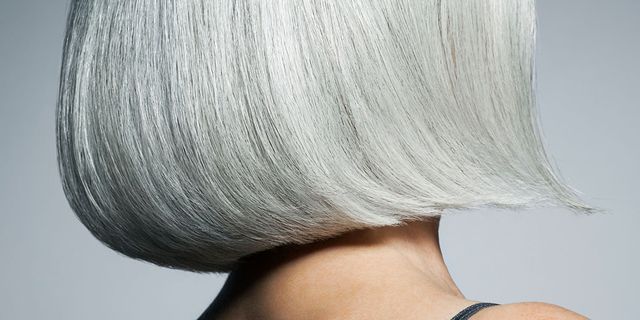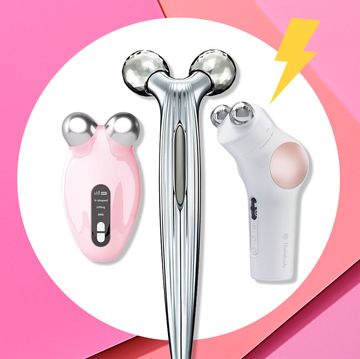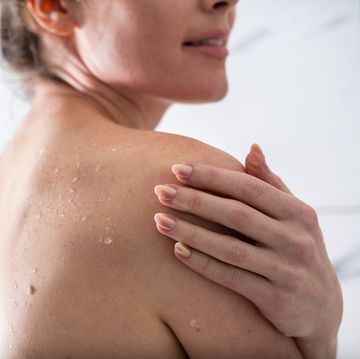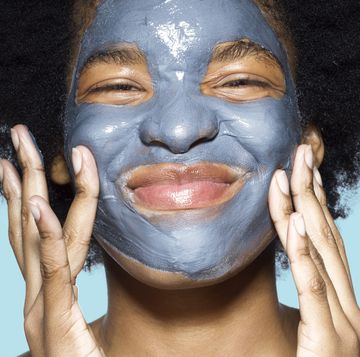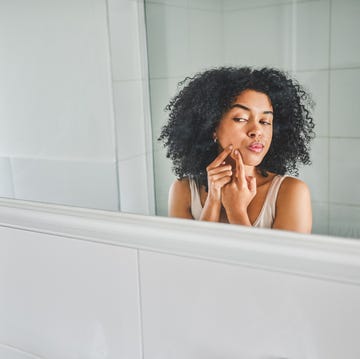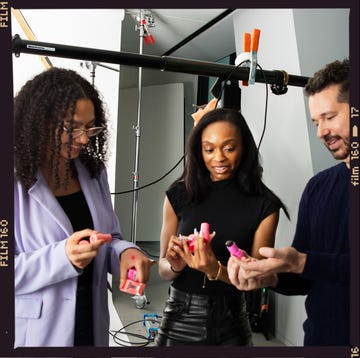Gray hairs aren't super-common for women in their twenties and thirties, so it's natural that you might start to freak out a little if you spot some. Unfortunately, premature grays happen, and there are a few reasons for them.
First, some basics: Gray hair is caused by lack of melanin pigment in the hair follicles, says Gary Goldenberg, M.D., assistant clinical professor of dermatology at the Icahn School of Medicine at Mount Sinai. The follicles still have a normal number of melanocytes (cells that make pigment), but these cells stop working over time, and the hair turns gray or white. It's not super common to go gray at a young age since gray hair usually follows the 50/50 rule, Goldenberg says—50 percent of the population will go gray by 50 years old.
But, again, gray hair happens in younger people, too. Genetics plays a big role, says Joshua Zeichner, M.D., a New York City-based board-certified dermatologist. “If your mom or dad developed early gray hairs, you likely will too,” he says. And, of course, you can’t do anything about that.
RELATED: What It Means If Your Pubes Are Going Gray
But if no one else in your family started graying early, it might be due to some other factors. A deficiency in vitamin B12 is linked to early grays, Goldenberg says, but experts aren’t sure why this happens other than the fact that B vitamins are important for hair health. A vitamin B12 supplement may help, but it’s always a good idea to check in with your doctor before starting any new supplementation.
Smoking has also been associated with early gray hair. “This may be related to nutritional deficiency that's associated with smoking or other poor health and lifestyle choices,” Goldenberg says. “It's also possible that free oxygen radicals that are increased by smoking damage hair follicles and cause premature gray hair.” So, naturally, quitting cigarettes should help.
And, you’ve heard it before, but it’s true: Constant stress can cause you to go gray earlier. “Although there is no direct link, stress increases cortisol levels, which increase free oxygen radicals that can damage hair follicles and cells that make pigment in the hair,” Goldenberg explains. Obviously it’s one thing to say you’ll de-stress and another to actually do it, but scaling back on your stress levels (if you can) should help your hair.
Speaking of stress, try this relaxing yoga pose:
Unfortunately, Goldenberg says that you can’t un-gray hairs that have already changed color, but you can try to get things in check before your whole head turns gray (provided, of course, it’s not due to genetics).
If you’ve made some lifestyle tweaks and the grays keep coming, you have two options: Embrace it and rock the look or dye it. Either way, own it and you’ll look great.
